
How to Use 2 Channel Relay: Examples, Pinouts, and Specs
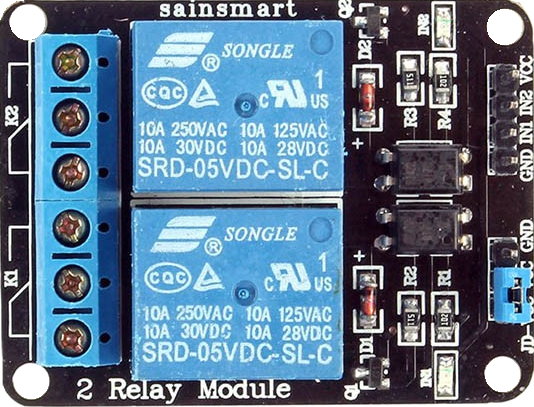
 Design with 2 Channel Relay in Cirkit Designer
Design with 2 Channel Relay in Cirkit DesignerIntroduction
A 2 Channel Relay is an electromechanical switch that allows control of two separate circuits using a single control signal. It is widely used in applications where high voltage or high current loads need to be controlled by low-power control signals. The relay provides electrical isolation between the control circuit and the load, ensuring safety and reliability.
Explore Projects Built with 2 Channel Relay
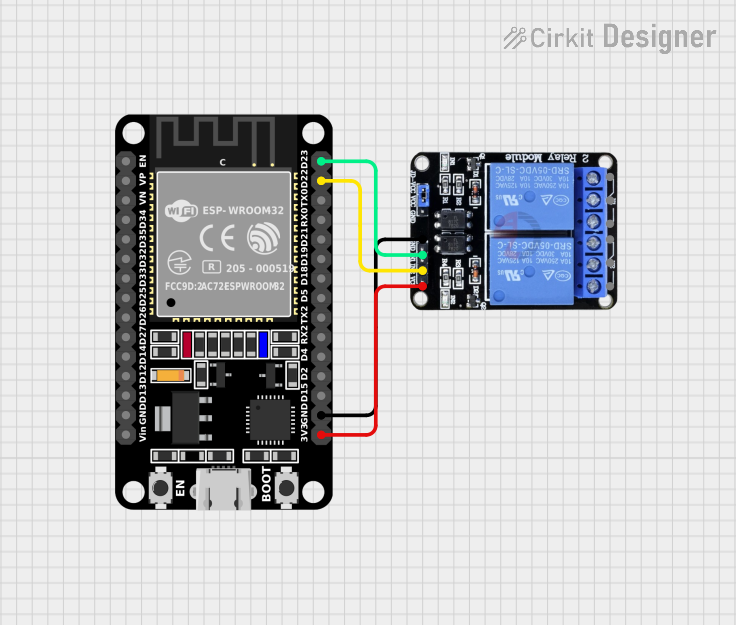
 Open Project in Cirkit Designer
Open Project in Cirkit Designer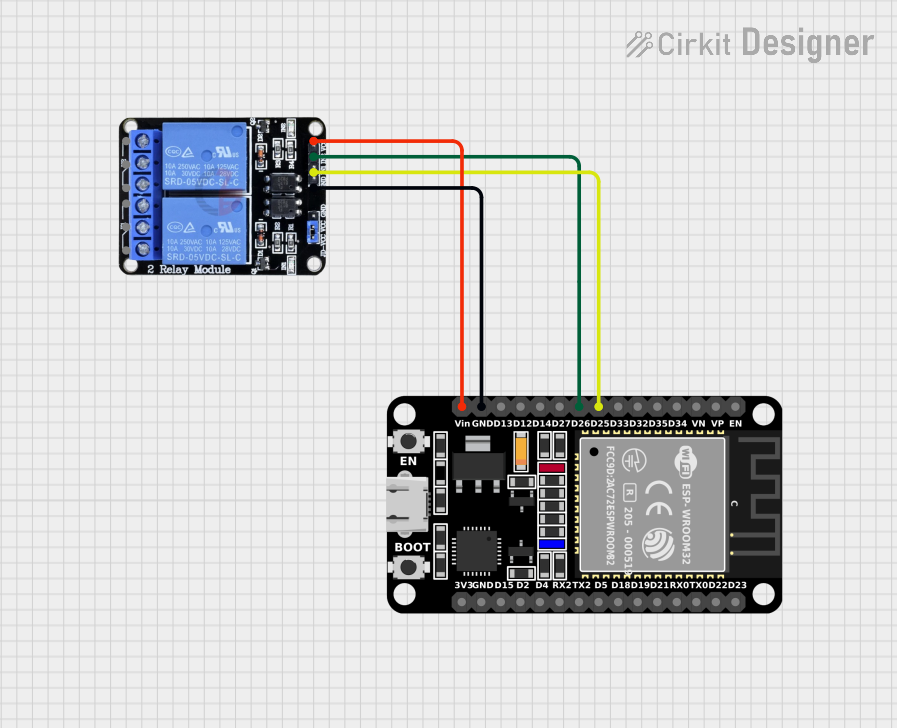
 Open Project in Cirkit Designer
Open Project in Cirkit Designer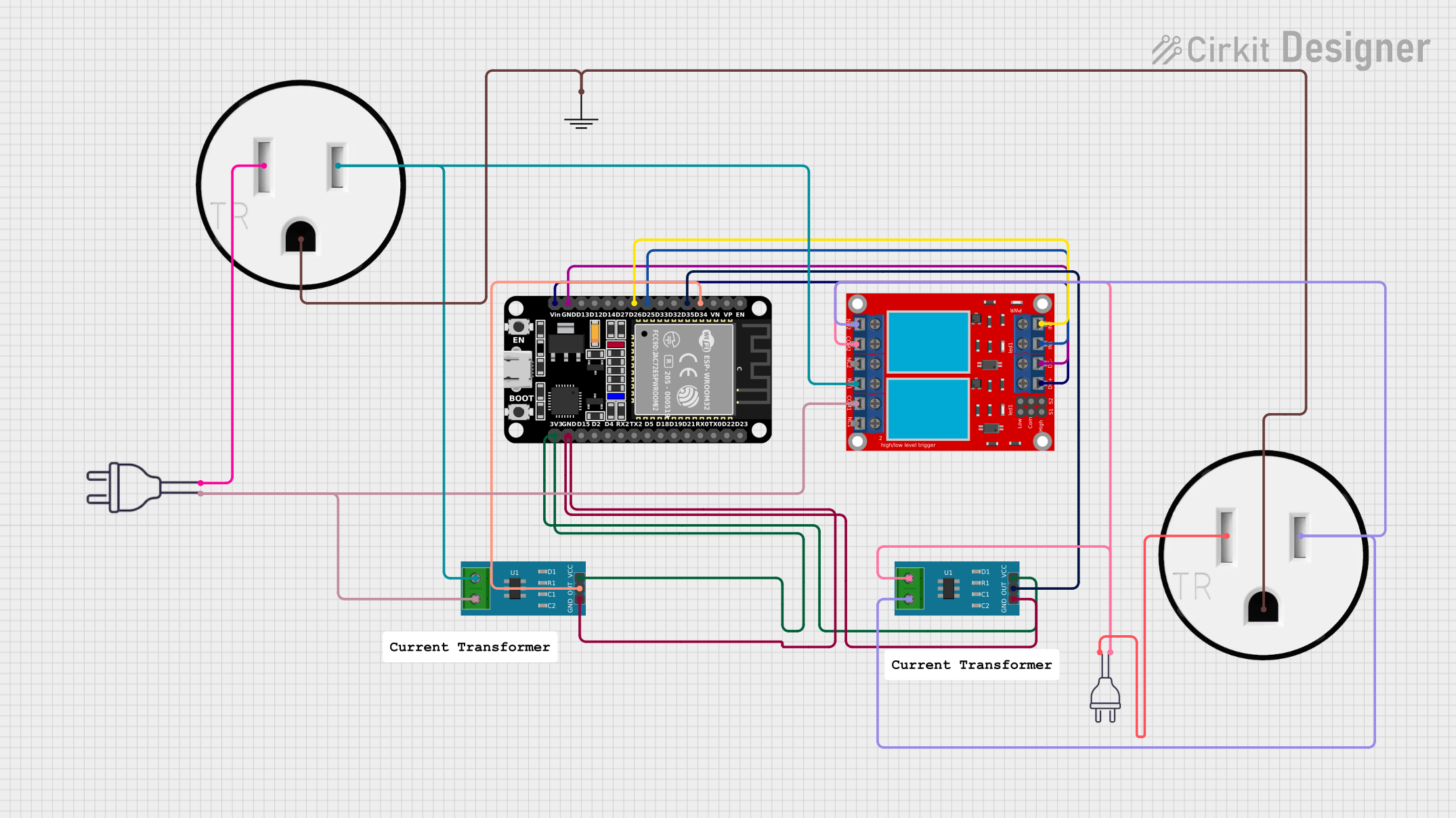
 Open Project in Cirkit Designer
Open Project in Cirkit Designer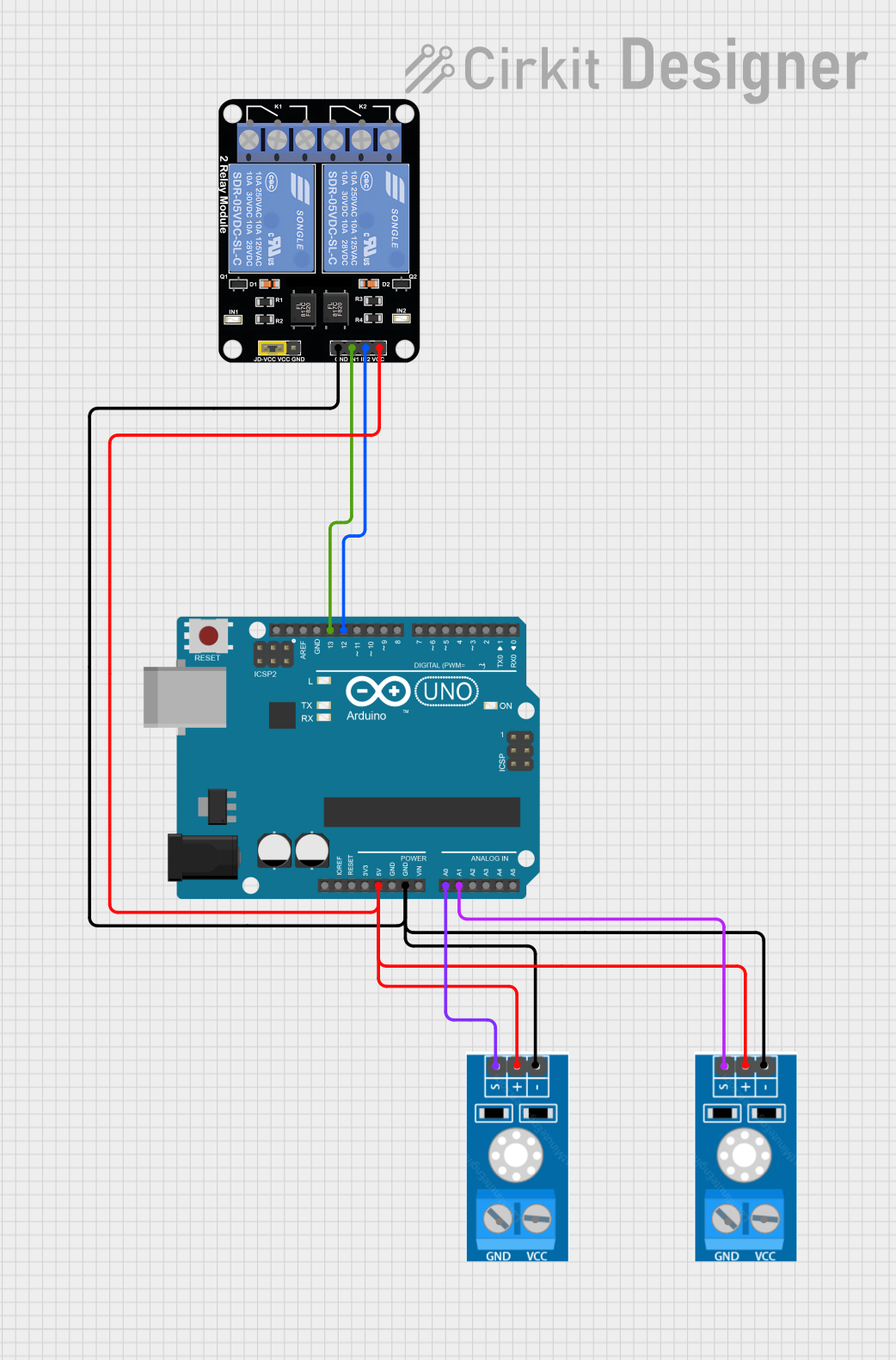
 Open Project in Cirkit Designer
Open Project in Cirkit DesignerExplore Projects Built with 2 Channel Relay

 Open Project in Cirkit Designer
Open Project in Cirkit Designer
 Open Project in Cirkit Designer
Open Project in Cirkit Designer
 Open Project in Cirkit Designer
Open Project in Cirkit Designer
 Open Project in Cirkit Designer
Open Project in Cirkit DesignerCommon Applications and Use Cases
- Home automation systems (e.g., controlling lights, fans, or appliances)
- Industrial automation for switching motors or heavy machinery
- IoT projects for remote control of devices
- Robotics for controlling actuators or other high-power components
- Automotive systems for switching high-current loads
Technical Specifications
Key Technical Details
- Operating Voltage (Control Side): 5V DC (common), 12V DC (optional versions available)
- Trigger Voltage: 3.3V to 5V (compatible with most microcontrollers, including Arduino)
- Relay Type: SPDT (Single Pole Double Throw) for each channel
- Maximum Load (AC): 250V AC at 10A
- Maximum Load (DC): 30V DC at 10A
- Isolation: Optocoupler-based isolation between control and load circuits
- Indicator LEDs: Onboard LEDs for each channel to indicate relay status
- Dimensions: Typically 50mm x 40mm x 20mm (varies by manufacturer)
Pin Configuration and Descriptions
The 2 Channel Relay module typically has the following pin configuration:
Control Side (Input Pins)
| Pin Name | Description |
|---|---|
| VCC | Power supply for the relay module (5V DC). |
| GND | Ground connection. |
| IN1 | Control signal for Relay 1. A HIGH signal activates the relay. |
| IN2 | Control signal for Relay 2. A HIGH signal activates the relay. |
Load Side (Output Terminals)
| Terminal Name | Description |
|---|---|
| COM1 | Common terminal for Relay 1. |
| NO1 | Normally Open terminal for Relay 1. Connected to COM1 when relay is ON. |
| NC1 | Normally Closed terminal for Relay 1. Connected to COM1 when relay is OFF. |
| COM2 | Common terminal for Relay 2. |
| NO2 | Normally Open terminal for Relay 2. Connected to COM2 when relay is ON. |
| NC2 | Normally Closed terminal for Relay 2. Connected to COM2 when relay is OFF. |
Usage Instructions
How to Use the 2 Channel Relay in a Circuit
Power the Relay Module:
- Connect the VCC pin to a 5V DC power source.
- Connect the GND pin to the ground of the power source.
Connect the Control Signals:
- Connect the IN1 and IN2 pins to the digital output pins of a microcontroller (e.g., Arduino).
- Ensure the control signals are within the operating voltage range (3.3V to 5V).
Connect the Load:
- For each relay channel, connect the load to the COM and NO/NC terminals based on your requirements:
- Use the NO terminal if the load should be OFF by default and turn ON when the relay is activated.
- Use the NC terminal if the load should be ON by default and turn OFF when the relay is activated.
- For each relay channel, connect the load to the COM and NO/NC terminals based on your requirements:
Control the Relays:
- Send a HIGH signal to IN1 or IN2 to activate the corresponding relay and switch the load.
Important Considerations and Best Practices
- Power Supply: Ensure the relay module is powered by a stable 5V DC source. Avoid exceeding the voltage rating.
- Isolation: The relay provides electrical isolation, but ensure proper grounding to avoid noise or interference.
- Load Ratings: Do not exceed the maximum load ratings (10A at 250V AC or 30V DC) to prevent damage.
- Flyback Diodes: If controlling inductive loads (e.g., motors), use flyback diodes across the load terminals to suppress voltage spikes.
- Arduino Compatibility: The relay is compatible with 3.3V and 5V logic levels, making it suitable for Arduino and other microcontrollers.
Example Code for Arduino UNO
// Example code to control a 2 Channel Relay with Arduino UNO
// Relay 1 is connected to pin 7, and Relay 2 is connected to pin 8
#define RELAY1 7 // Define pin for Relay 1
#define RELAY2 8 // Define pin for Relay 2
void setup() {
pinMode(RELAY1, OUTPUT); // Set Relay 1 pin as output
pinMode(RELAY2, OUTPUT); // Set Relay 2 pin as output
// Initialize relays to OFF state
digitalWrite(RELAY1, LOW); // Ensure Relay 1 is OFF
digitalWrite(RELAY2, LOW); // Ensure Relay 2 is OFF
}
void loop() {
// Turn Relay 1 ON and Relay 2 OFF
digitalWrite(RELAY1, HIGH); // Activate Relay 1
digitalWrite(RELAY2, LOW); // Deactivate Relay 2
delay(2000); // Wait for 2 seconds
// Turn Relay 1 OFF and Relay 2 ON
digitalWrite(RELAY1, LOW); // Deactivate Relay 1
digitalWrite(RELAY2, HIGH); // Activate Relay 2
delay(2000); // Wait for 2 seconds
}
Troubleshooting and FAQs
Common Issues and Solutions
Relay Not Activating:
- Cause: Insufficient control signal voltage.
- Solution: Ensure the control signal voltage is within the required range (3.3V to 5V).
Load Not Switching:
- Cause: Incorrect wiring of the load terminals.
- Solution: Verify the connections to the COM, NO, and NC terminals.
Relay Clicking Noise:
- Cause: Unstable power supply or noisy control signals.
- Solution: Use a stable power source and add decoupling capacitors if necessary.
Overheating:
- Cause: Exceeding the maximum load ratings.
- Solution: Ensure the load does not exceed 10A at 250V AC or 30V DC.
FAQs
Q: Can I use the relay with a 3.3V microcontroller like ESP32?
A: Yes, the relay is compatible with 3.3V control signals, but ensure the power supply to the relay module is 5V.Q: Is the relay suitable for switching DC motors?
A: Yes, but use flyback diodes across the motor terminals to protect the relay from voltage spikes.Q: Can I control both relays independently?
A: Yes, each relay has its own control pin (IN1 and IN2) for independent operation.